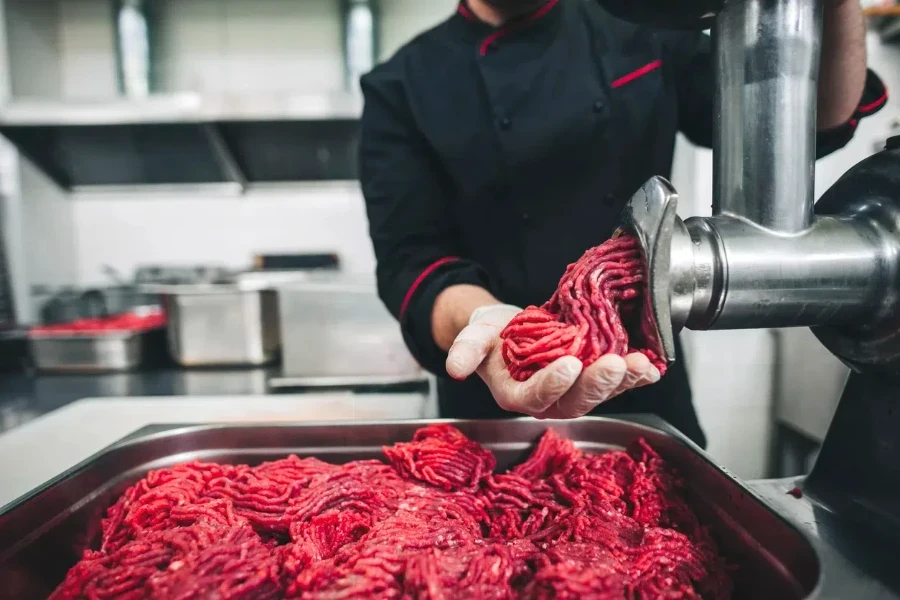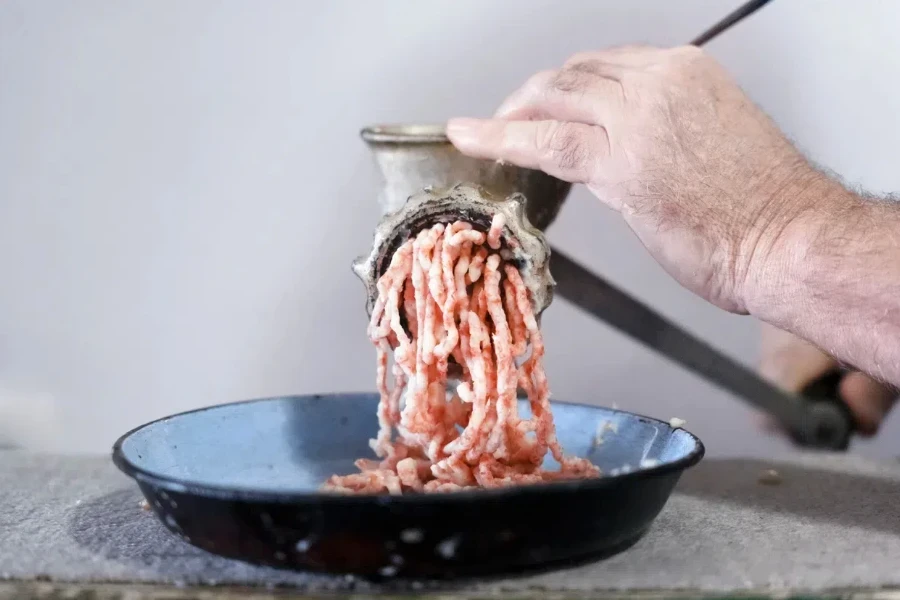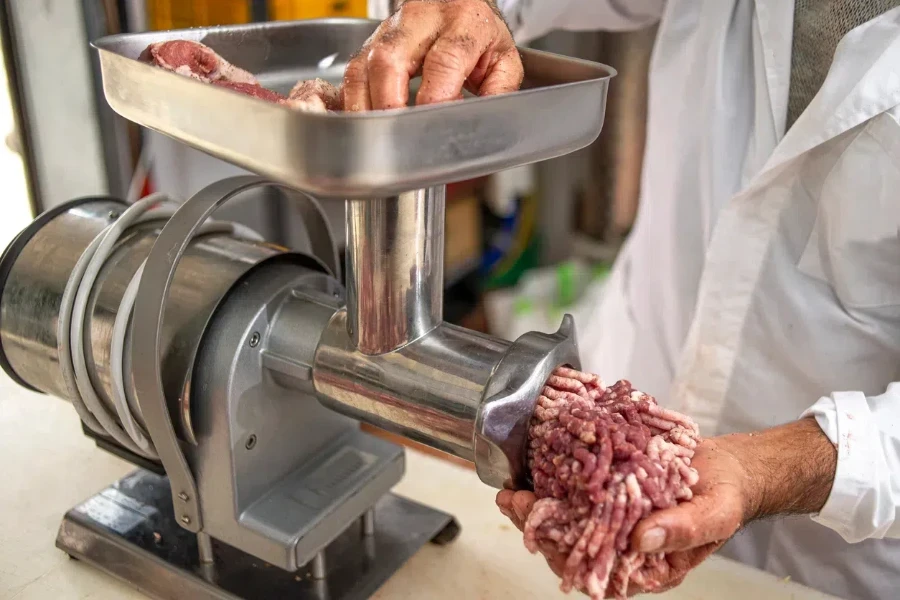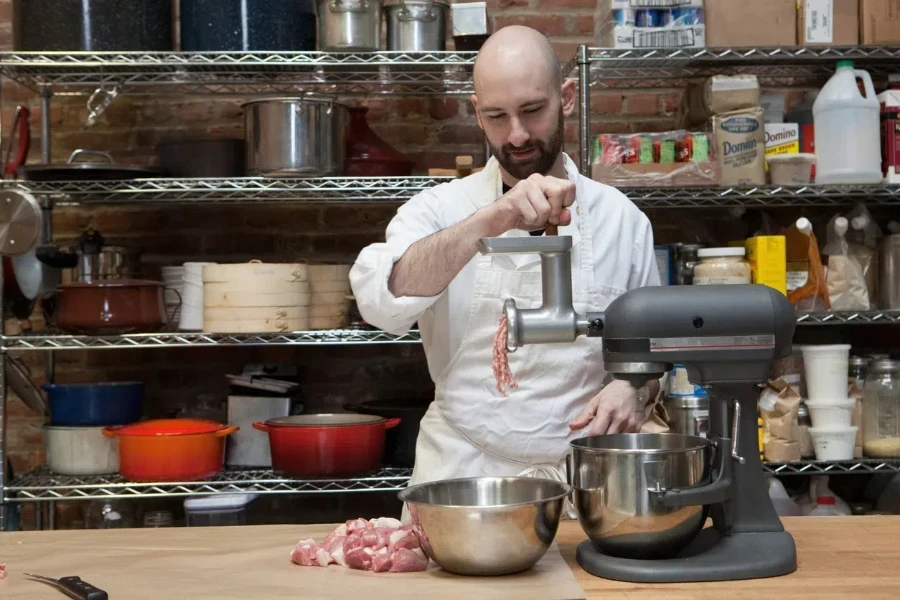Business owners in the market for a bone grinder, whether for consumers in kitchens, butcher shops, or even a large-scale industrial setting, have a lot to consider. These machines, also known as bone crushers or bone-crushing machines, are crucial in breaking down animal bones into smaller, more manageable pieces.
But how do businesses choose the right one for their customers? With so many options, they must consider several factors to make the right choice. This guide will break down the most important things to consider when stocking bone grinders that fits the consumer’s needs, from machine types and capacity to safety features and long-term costs.
Table of Contents
Type: Choose the right model for crushing needs
Capacity and output: Matches production volume
Material durability: Ensures lasting performance
Ease of maintenance: Simplifies cleaning and care
Safety features: Protects during operation
Energy efficiency: Lowers power consumption
Bottom line
1. Type: Choose the right model for crushing needs

First things first, businesses must understand the different types of bone grinders available. They come in various designs, each with its own pros and cons, depending on what they will use them for.
① Manual bone grinders
Manual grinders are the most basic option. These hand-cranked devices are perfect for small-scale use, like if consumers need to grind up some bones for homemade pet food or small farm operations.
Even better, they’re affordable and don’t need electricity. However, they can be a bit labor-intensive. Regardless, manual bone grinders are great for small batches, so users shouldn’t expect them to handle large quantities quickly.
Pros
- Cheap and easy to maintain in different conditions
- No electricity needed
- Good for small batches
Cons
- Slow and requires physical effort
- Limited capacity
② Electric bone grinders
If consumers need more power, electric grinders are the way to go. They’re great for butcher shops, small pet food businesses, or medium-scale meat processing operations. These machines can handle larger bones and bigger quantities in much less time than manual grinders.
Pros
- Fast and efficient
- Can process larger bones
- Ideal for commercial use
Cons
- Higher price point
- Needs electricity
- Regular maintenance required
③ Industrial bone crushers
There’s nothing better than a heavy-duty bone crusher for serious industrial operations. These machines are built to easily crush large volumes of bone, like beef, chicken, and pork bones. Consumers often use them in pharmaceutical companies, animal feed manufacturers, or rendering plants where continuous, high-volume processing is key.
Pros
- Can handle massive quantities and tough bones
- Perfect for large-scale bone paste production
- Designed for continuous use
Cons
- Very expensive
- Requires significant space and maintenance
- Overkill for smaller operations
2. Capacity and output: Matches production volume

Next, consider how much bone consumers will need to grind. Bone grinders come in all sizes, usually rated by how many kilograms or pounds they can handle per hour. If businesses know the scale of their operation, it’ll be easier to pack a machine that can keep up with their production needs.
Small-scale use
Consumers won’t need anything too heavy-duty for home or small farms. A small manual or electric grinder with a 50-100 kg capacity per hour should be more than enough. It’s perfect for those who only grind soft bones occasionally or handle bones from a few animals at a time.
Medium-scale operations
If businesses are targeting butcher shops or pet food manufacturers, they will need something with a bit more power. The best bet is an electric grinder that can handle 100-500 kg per hour. It lets them process a decent amount without having to stop and always give the machine a break.
Large-scale industrial use
These serious machines are the go-to for consumers working in an industrial setting. Industrial crushers often have capacities ranging from 500 kg to several tons per hour. They can handle such workloads because manufacturers build them for high-volume, high speed, non-stop operations. They can run all day long without breaking a sweat.
3. Material durability: Ensures lasting performance
Let’s talk about materials. Bone grinding can be tough on a machine, so businesses want to ensure it’s made from durable materials that can handle the constant wear and tear for years. Here are three common materials to consider:
| Material | Description |
| Stainless steel | Stainless steel is the go-to material for food-grade bone grinders. It’s durable, corrosion-resistant, and easy to clean, perfect for industries like food processing or pharmaceuticals. |
| Cast iron | Cast iron is incredibly strong, making it ideal for heavy-duty applications. However, it requires more maintenance to prevent rusting, so it’s not the best option if cleanliness is a top concern. |
| Alloy steel | Alloy steel is a top choice for industrial bone crushers. It’s built to handle continuous use and heavy loads, making it the best option for large-scale production. |
4. Ease of maintenance: Simplifies cleaning and care

Let’s be honest: Nobody likes cleaning complicated machinery. If the bone grinder is difficult to clean or requires constant maintenance, it will slow down consumers’ operations—not to mention the hygiene risks in food-related industries. Hence, businesses must look for bone grinders with the following features:
Removable parts
Machines with easily removable parts are a godsend when it comes to cleaning. Consumers want equipment they can disassemble without needing a toolbox, especially in environments where cleanliness is a legal requirement, like food or pharmaceuticals.
Lubrication and maintenance
Bone grinders endure a lot of wear and tear. Regular lubrication of moving parts keeps the machine running smoothly. That’s why consumers need bone grinders with easy access to manual lubrication or, even better, an automatic lubrication system.
Replacement parts
Blades and gears will wear out over time—it’s inevitable. So, before stocking, businesses should check if consumers can easily get replacement parts. If the machines are hard to repair, it will become a headache, with consumers waiting weeks for spare parts.
5. Safety features: Protects during operation

Safety is always a big concern, especially with machines that involve sharp blades and heavy grinding mechanisms. For this reason, businesses should only offer bone grinders equipped with features that protect the operator and the machine. Here are some of them to consider:
Safety guards
Look for grinders with protective shields to prevent hands from contacting blades or moving parts. This safety feature is especially important in high-speed electric or industrial models.
Emergency stop button
An emergency stop button is a must-have for any commercial or industrial grinder. It lets the operator stop the machine immediately if something goes wrong, preventing injuries or damage.
Overload protection
Overload protection systems automatically shut down the machine if it’s overworked, preventing the motor from burning and saving consumers costly repairs.
6. Energy efficiency: Lowers power consumption

While small-scale consumers don’t usually care much about this factor, large-scale operations must monitor energy consumption, as they often run for extended periods. So, a bone grinder that consumes too much power can lead to high operating costs.
Some electric grinders offer energy-saving features, like variable speed control, allowing consumers to adjust the power depending on the material they’re processing. These features help cut down on energy costs in the long run.
Bottom line
Choosing the right bone grinder isn’t just about picking the first one that fits the budget. Businesses must consider the type of machine, its capacity, durability, ease of cleaning, and safety features to give consumers the best possible experience. Whether consumers grind bones for a small farm, a butcher shop, or a large-scale industrial operation, offering them the right bone crusher can save them time, money, and many headaches.




